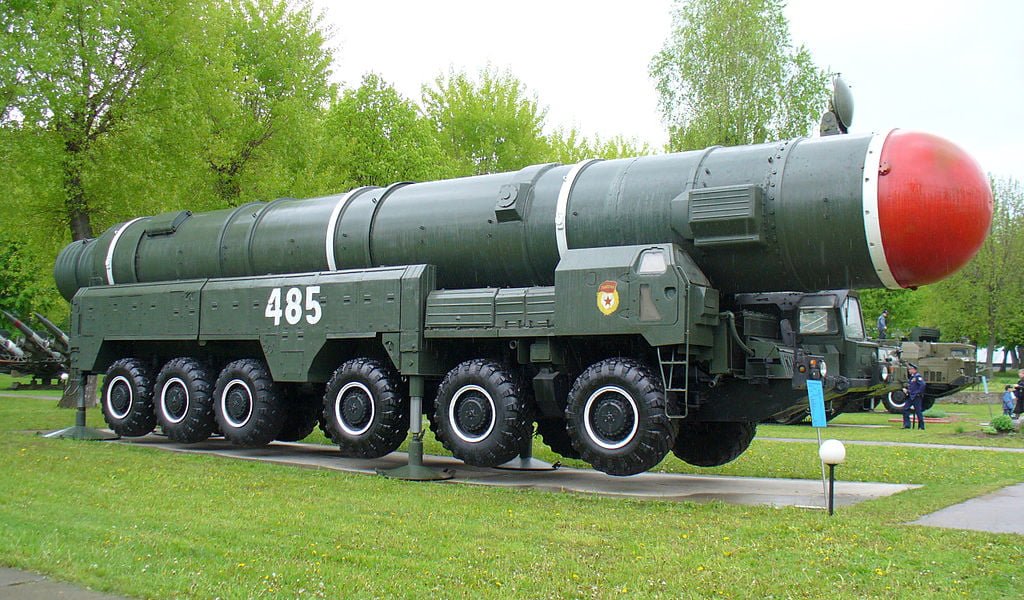Last year, 122 UN member states signed an agreement not to possess or develop nuclear weapons, but according to a new report, that hasn’t brought the dream of a nuclear weapon free world any closer. Some countries have even increased their nuclear arsenals in the past year. Pakistan is one of those countries and now possesses more weapons than their closest rival. Pakistan nuclear warheads have now increased past that of India, possibly disturbing the nuclear balance in the region.
SIPRI Report
While nuclear capable countries are not transparent about how many weapons they have in their arsenal, third party agencies collect information and monitor the situation. This week, the Stockholm International Peace Research Institute (SIPRI) released their updated report on nuclear capable countries. It showed that there are now more Pakistan nuclear warheads than India. Pakistan nuclear warheads now come in at 140-150 while India is estimated to have between 130 and 140 nuclear weapons.
The report said, “India and Pakistan are both expanding their nuclear weapon stockpiles as well as developing new land-, sea- and air-based missile delivery systems.”
China, meanwhile, has double the weapons of Pakistan, with 280 nuclear warheads. “China continues to modernise its nuclear weapon delivery systems and is slowly increasing the size of its nuclear arsenal,” SIPRI said.
The SIPRI report also found that the world’s nuclear powers are reducing their nuclear arsenals. This year, there were an estimated 14,465 nuclear weapons between all of the nuclear powers. At the beginning of 2017, there were 14.935. The reduction in arms is due largely to the START treaty between the US and Russia, signed in 2010.
However, the report found the nuclear powers are putting a greater focus on modernizing. What does this mean? SIPRI explains, “Older weapons are being replaced – some of them are actually 40 or 50 years old – but new nuclear weapons are also being developed that have new capabilities and new technical functions.”
SIPRI also expressed concern for a “worrying” emphasis nuclear powers are placing on strategic deterrence.
“The renewed focus on the strategic importance of nuclear deterrence and capacity is a very worrying trend,” the SIPRI said.
While the slight decrease is nuclear weapons might seem like good news, SIPRI warns those in favor of nuclear disarmament not to get too excited. Shannon Kile, Senior Researcher with the SIPRI Disarmament, Arms Control and Non-proliferation Programme, explained, “The modernisation programmes underway in the nuclear weapon-possessing states indicate that genuine progress towards nuclear disarmament will remain a distant goal.”
According to Jan Eliasson, head of SIPRI, “The world needs a clear commitment from the nuclear weapon states to an effective, legally binding process towards nuclear disarmament.”
The SIPRI report also pointed out that there was greater military spending this year than since the cold war. The countries of the world spent a total of $1,739 billion on military spending, with the US, China, and Russia spending the most. Unsurprisingly, the global arms trade has also increased to highest levels since the Cold War.
Nuclear Capable Countries
There are nine countries with nuclear capability in the world: the US (6,450), Russia (6,850), Israel (80), North Korea (10-12), Britain (215), Pakistan (140-150), India (130-140), France (300), and China (280).
According to SIPRI, 92 percent of the nuclear weapons in the world are possessed by the US and Russia. The report indicated that Russia and the US are both engaged in long term arms modernization programs.
Russia has especially placed an emphasis on nuclear weapons development as part of their strategic defense program. Meanwhile, the US confirmed its development of nuclear weapons in February with the publishing of the updated Nuclear Posture Review. The US plans to spend $400 billion on its nuclear arsenal by 2026.
Although Germany doesn’t possess any nuclear weapons, the new US developments will affect Germany. Germany is protected by America’s nuclear shield under NATO. Around 20 B61 nuclear bombs in the Eifel region will soon be replaced with more modern weapons.
While smaller countries like India and Pakistan are engaged in an arms race, SIPRI is more concerned over the US and Russia. Kile said, “What concerns me at the moment is the fact that the political-strategic relationship between the United States and Russia has collapsed – and between them these two countries possess 92 percent of all nuclear weapons.”
SIPRI also expressed concerns over North Korea’s nuclear development, saying in the report, “North Korea also demonstrated unexpected rapid progress in the testing of two new types of long-range ballistic missile delivery systems.” Kile said that he was “skeptical” about the meeting between North Korean leader Kim Jong-Un and US President Donald Trump.
SIPRI remains clear that they aim to see greater nuclear disarmament with a commitment from the world’s nine nuclear capable countries, “The world needs a clear commitment from the nuclear weapon states to an effective, legally binding process towards nuclear disarmament.”
Pakistan Nuclear Warheads
Although news broke that Pakistan has more nuclear warheads than India, India claims they are still able to adequately defend themselves from a Pakistani attack. Indian defense describes the Indian deterrent system as “robust.”
One source inside of India explained, “The number of warheads do not really matter. With a declared no-first use (NFU) nuclear policy, India is keen to ensure survivability and credibility of our assets and NC3 (nuclear command, control and communication) systems for assured second-strike capabilities…We have achieved this to a large extent.”
Another source told the Time of India, “For India, nuclear weapons are not war-fighting weapons. But we need credible minimum deterrence, with the certainty of massive retaliation against adversaries.”
China’s growing nuclear arsenal could also pose a threat to India along with Pakistan nuclear warheads.




